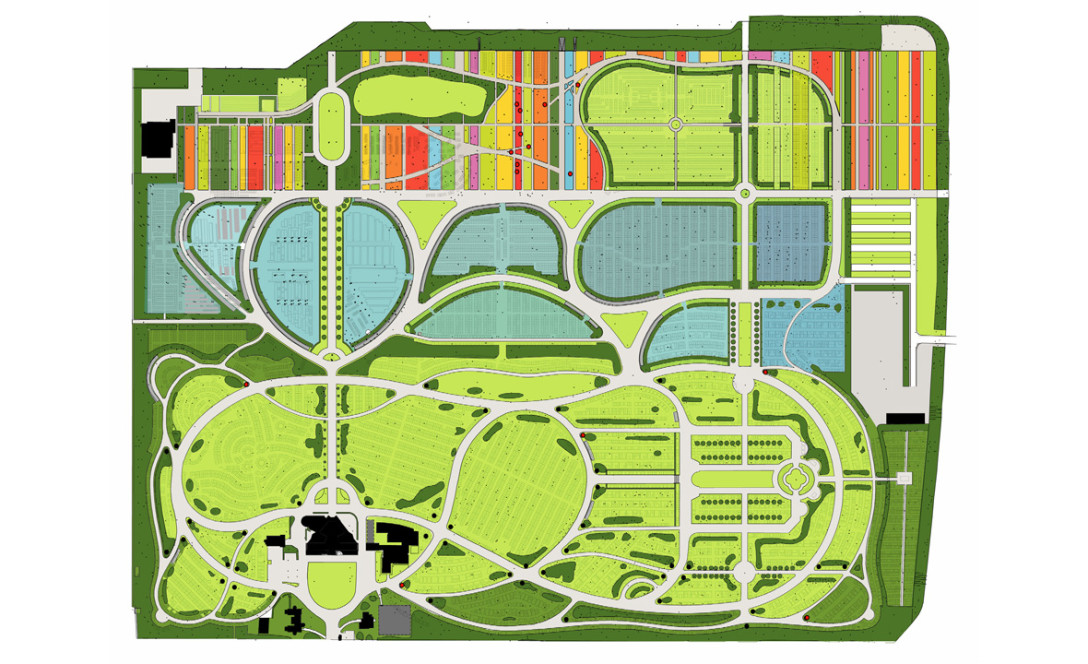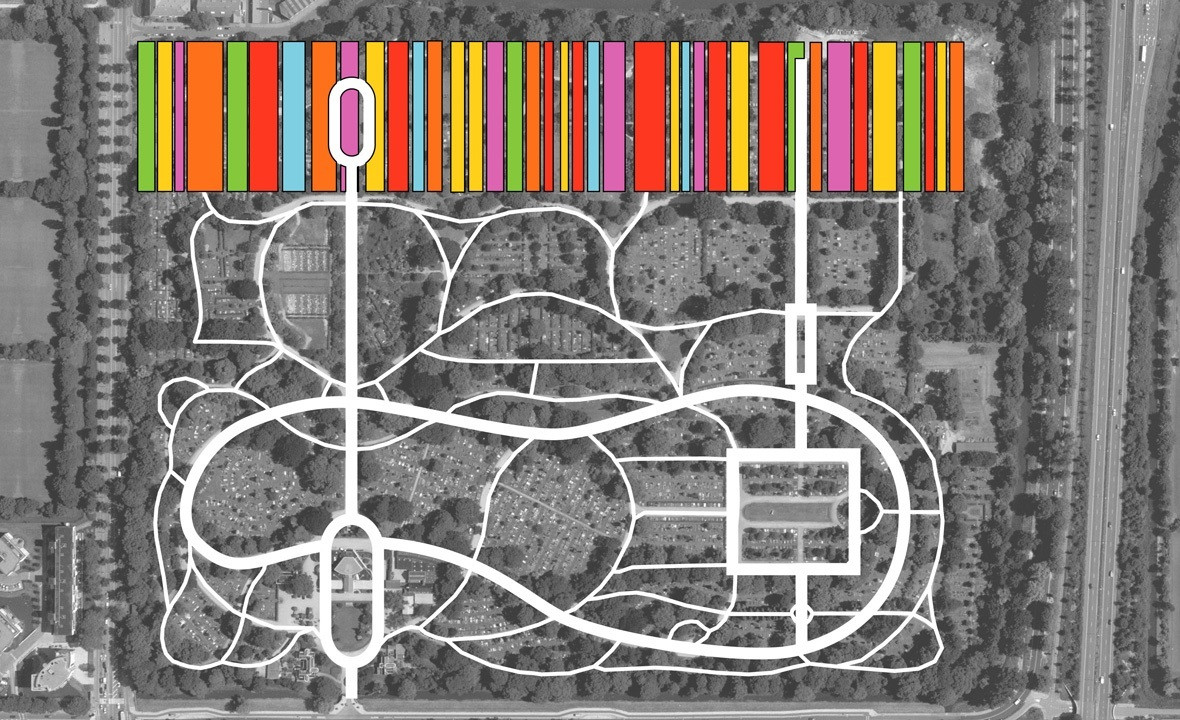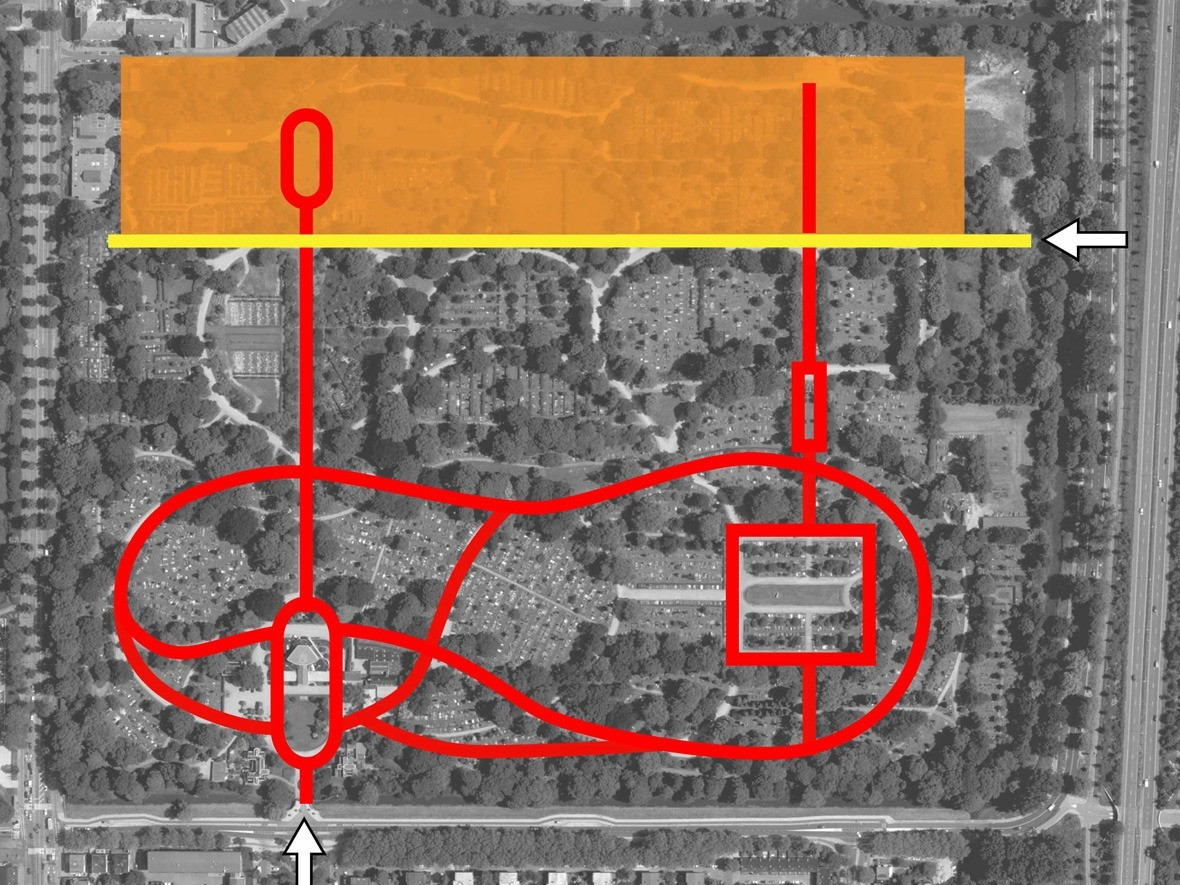


Burial, cremation, and remembrance are the primary functions of De Nieuwe Ooster, the largest cemetery in Amsterdam. With a size of 33 hectares and 28,000 burial plots, De Nieuwe Ooster is also one of the largest cemeteries in the Netherlands. The cemetery has been laid out in roughly three phases: in 1889, 1915, and 1928. The first and second phases were designed by Leonard Springer; the third by the public works department of the city of Amsterdam. De Nieuwe Ooster has been a national monument since 2003. In 2005, Karres en Brands prepared a master plan for De Nieuwe Ooster cemetery.


Cemeteries were and remain mirrors of society; they offer an image of the relationship between collective and individual, the social relations of the time, the prevailing idea of nature, the traditions of burial, and developments in the field of design and landscaping. To monitor new developments and guide the coherence of the whole, Karres en Brands has prepared a master plan for the sub-plans of De Nieuwe Ooster, which have been carried out in several phases.
The master plan is based on three layers that determine the main structure, and thus also any future developments; the strengthening of the variations between the three different zones, which result from the cemetery’s history of development, the improvement of the internally spacious main structure, and finally, the maintenance of the closed boundary of De Nieuwe Ooster, like a frame that holds together the whole.


The first zone covers the oldest part, which is considered the most valuable from a cultural historical and landscape architectural point of view. For this section, the structural plan derives from the preservation and restoration of the original character and atmosphere of Springer’s design. The second zone concerns the first expansion; the structural plan proposes to reinterpret this zone. This means that the ideas of Springer must largely be relied upon, but that there is also room for new developments. The third zone is less valuable from both a cultural historical and landscape architectural point of view. For this zone, a design has been made that is based on parallel bands, each with their own character and substance.

Besides the different qualities of the three areas, the two axes and the main paths in the oldest part of the cemetery are important carriers of its identity and spatial structure. The wide avenue that leads between the first and second extensions has once again been straightened, as Springer originally intended. The richly planted border around the cemetery holds everything together and forms a solid buffer between De Nieuwe Ooster and the busy city life surrounding it.
| Location. | Amsterdam, Netherlands |
|---|---|
| Assignment | Structural plan |
| Size | 33 hectare |
| Design | 2005 |
| Status | Realized |
| Client | De Nieuwe Ooster |